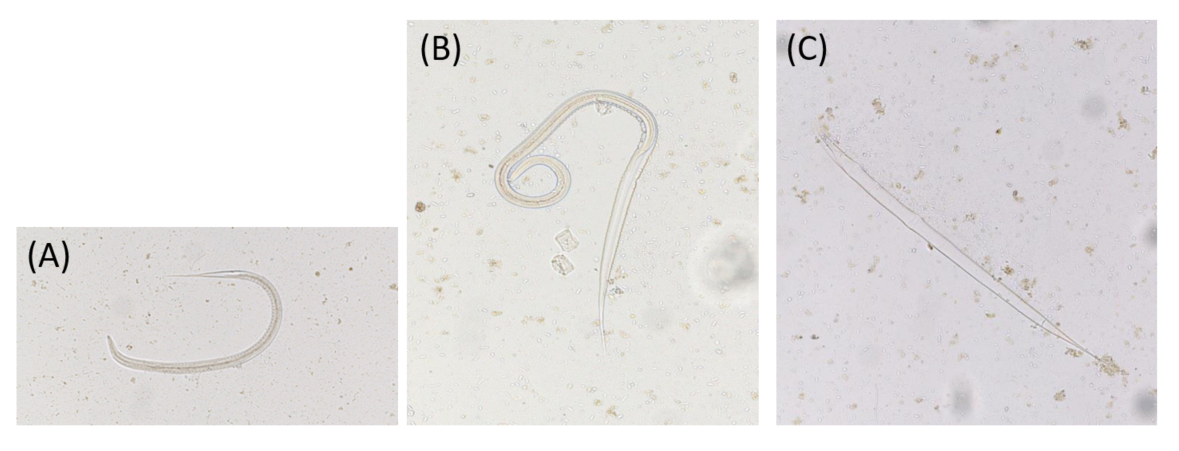The effects of structurally unique ellagitannins on the exsheathment of third-stage infective larvae were examined on H. contortus and T. colubriformis by the in vitro larval exsheathment inhibition assay
Recently, we studied the anthelmintic effects of 30 individual ellagitannins to find out how a structurally diverse array of ellagitannins differs at inhibiting the third-stage infective larvae of parasitic nematodes of ruminants. Two nematode species were used as parasitic models: H. contortus and T. colubriformis:
Worldwide, parasitic gastrointestinal nematodes continue to threaten animal health, welfare, and production in outdoor breeding systems of small ruminants. For more than 50 years, the control of these parasitic worms has relied on the use of commercial synthetic anthelmintics. However, anthelmintic resistance in worm populations is nowadays widespread and requires novel solutions. The use of tannin-rich plants has been suggested as an alternative to synthetic anthelmintics.
Ellagitannins were found to be promising natural anthelmintics
The effects of ETs were tested by using the larval exsheathment (Figure 1) inhibition in vitro assay on the third stage infective larvae of two highly prevalent nematodes: one abomasal (H. contortus) and one intestinal (T. colubriformis) species. Ellagitannins were found to be promising natural anthelmintics as they showed direct inhibition on larval exsheathment for both nematode species. In general, ellagitannins were more efficient at inhibiting the exsheathment of H. contortus larvae than those of T. colubriformis.

Figure 1. Larval exsheathment process: (A) an ensheathed larva, (B) a larva in the process of exsheathment and (C) The sheath left after the exsheathment process. The photos were kindly provided by Dr. Hervé Hoste.
Effets of structural features of ellagitannins on larval exsheathment
The efficiency of inhibition increased as the degree of oligomerization or the molecular weight of the ellagitannin increased (Figure 2). In addition, the structure of the central glucose core affected the anthelmintic activity slightly and in general, acyclic ellagitannins seemed to be less efficient inhibitors than the glucopyranose based ellagitannins. Otherwise, we found no other structural features of ellagitannins that significantly affected the anthelmintic activity on the third-stage infective larvae. The effective concentrations were physiologically relevant and should be achievable in the gastrointestinal tract in in vivo conditions.

Figure 2. Effect of the degree of oligomerization (A) and molecular weight (B) on larval exsheathment on the third-stage infective larvae of H. contortus (●) and T. colubriformis (○) evaluated by the average difference from the control.
Acknowledgements
The research project was multidisciplinary and it was carried out in collaboration with Lucie Legroux and Hervé Hoste from INRA, France. The research was funded by the Academy of Finland (grant numbers 251388 and 310549 to Maarit Karonen). Authors Juha-Pekka Salminen and Hervé Hoste received funding through a Marie Curie Initial Training Network from the European Union (“LegumePlus”, PITNGA-2011-289377).
© 2020 American Chemical Society. This article is an open access article distributed under the terms and conditions of the ACS Author Choice with CC-BY license.
